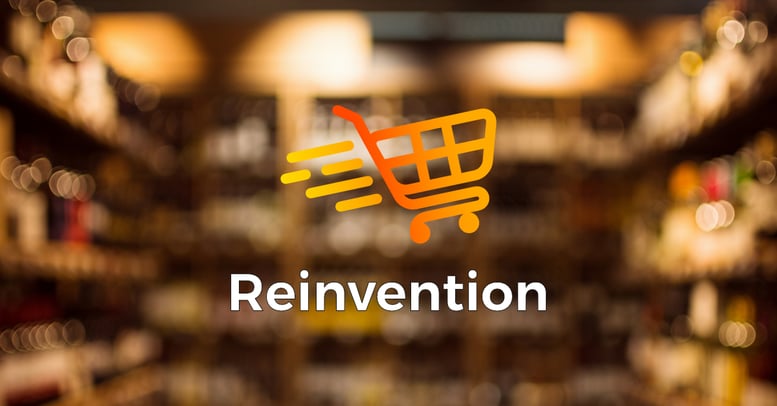In Australia, we are now just a little over two weeks into the far-reaching social, lifestyle, business and economic impacts of COVID-19. From a health standpoint, it is our society’s number one priority.
From a business perspective, it is too early to say precisely what the economic impacts will be. However, we can make some reasonably confident predictions on areas of business that will be permanently changed by our forced isolation. One of these is retail.

Retail will never be the same again
Over the past decade, there has been a steady but unspectacular rise in the e-commerce share of retail sales.
- The KPMG 2020 Australian Retail Outlook Report states: “In 2018, online sales penetration reached 10 percent of Australian retail turnover excluding cafes, restaurants and takeaway food services. Meanwhile, markets like the UK are reaching penetration levels three times higher”.
- The Australia Post Inside Australian Online Shopping Report 2019 says: “Almost three-quarters of all Australian households are now shopping online, and we expect that around 12 percent of all consumer spending will be conducted online by 2021”.
So, only around 11 percent of retail sales are now online even though about three-quarters of us shop online. A better leading indicator though is the e-commerce growth rate of 20% in 2018, along with an accelerating trend line.
There are several good reasons for the sustained domination of bricks and mortar retail in Australia. First is that most Australians enjoy the shopping experience. That has not yet been mastered through pure-play online retail, and multi-channel retail in Australia is still immature.
The second is the logistical challenges of Australia’s wide-open spaces with low population density, make us a harder nut to crack.
The third, and perhaps greatest reason is behavioural adaptation. There hasn’t been, up until now, a compelling reason to change our shopping behaviour dramatically. However, that has just changed - big time.
The extended period of isolation that we have just begun will almost certainly result in long-term changes to the way we shop.
It is reasonable to assert that the online play from established Australian retailers has been mostly defensive. That is, to limit the erosion of share by pure-play online retailers.
Post COVID-19 will be the time for mature multi-channel retailers to promote the combined benefits of their offer. For the multi-channel retailer, the role of bricks and mortar will increasingly be about the shopping experience. While the role of e-commerce will be the transaction and fulfilment. When viewed in this way, online is not merely a choice, it increases the combined value of the retail experience.
What can retailers do?
Short-term needs are clear.
- Increase the capacity and sophistication of deliver-to-home logistics
- Improve support for online customers
- Layer the shopper experience to facilitate:
- Shopping speed and simplicity
- Enrichment of the e-commerce shopping experience and the all-you-need-to-buy availability of relevant and motivating information
The mid-term needs run deeper into the sophistication of customer experience management over time. The questions include:
- Is our CRM up to the demands of today?
- Are we properly segmenting our customers?
- How well do we understand the preferences of individual customers?
- Is our communication explicitly tailored to the unique preferences of customers and segments?
- How efficient is our marketing program?
- What can we automate?
- Are we measuring what we need to so we can determine what money is being wasted and how we can continuously improve?
But there is some good news! There are mature and very affordable technology solutions available today that answer these challenges. Cloud-based CRMs and integrated CRM and marketing platforms such as Hubspot provide the means to identify customer behaviour and create automated workflows. These can in turn deliver tailored messaging and online content to individuals and customer segments.
Furthermore, a critical point is to decide what role stores play within the multi-channel retail mix as conditions return to a new form of normal. Remembering that the new normal will be different from 2019. How can a new view of multi-channel retail be created to provide an irresistible consumer experience?
What can we learn from Amazon?
For better and for worse, Amazon has defined the way we shop online today. When it comes to competitive convenience, Amazon is a natural choice for those who want that. However, is Amazon really an outstanding shopping experience? Does it inspire us as shoppers? Of course not. It’s just simple, and often but not always, sharply priced.
Therefore, done the right way, the Amazon shopping experience is genuinely beatable.
What we can really learn from Amazon though, is in the technology that drives smart communication and site content delivery. Both are tailored to individual shopping preferences. Online shoppers can be pretty confident that when they open an Amazon email, it will be relevant to them. Very few offer the same quality of customer-relevant experience.
Amazon A/B test everything. They automate everything. They understand what every millisecond of site-speed does for their sales. They always learn and improve.
Likewise, Woolworths have built a customer insight driven process for optimising and promoting their promotions and online store offer.
Again, all of this is possible for every retailer today.
How will the consumer change?
More difficult to determine will be how customer tastes and preferences change through this time. What we can learn from past recessions and the global financial crisis are trend changes in customer psychology.
- Sustainability gets real. The concept of sustainability has been growing steadily in importance for decades. More recently, with fires, droughts and rising temperatures, there’s been a growing feeling that things are not right in our natural world. The Australia Institute Climate of the Nation 2019 Report shows that Australians are becoming increasingly concerned about the practical risks of long-term climate change. COVID-19 will likely reinforce this feeling
- Local is best. For people to feel like their lives are returning to normal, they will likely want to support local businesses. Food retailers can take cues from the rise of the local food industry in Tasmania
- Austerity is the new black. When many people in the community suffer financially, conspicuous forms of consumption become less desirable. This was seen more in other prosperous countries in the post GFC period.
- Experience finds a new driver. In recent years, the luxury in which we live compared to our history and other parts of the world have driven a desire for authentic experiences. This will quite probably continue, although driven more by a desire to simply enjoy life, now that less can be taken for granted.
Creativity and innovation to the fore
Retail in Australia is a broad church. For some there are untold current opportunities that arise from adversity. We are already seeing an uprising of innovation stemming from the present necessity. Things like adapting manufacturing to the need for facemasks and hand sanitiser. And, the rapid change made by some restaurants to offer a variety of home delivery services.
There has never been a better time for creativity to be celebrated and supported by Australian retail businesses.
Getting ready
Some industries will thrive within this landscape of hyper-disruption. For others, the end will come and that is very sad. But for the majority of Australian retailers, getting ready to create competitive advantage within the post-COVID-19 landscape must be the next priority beyond survival.
It’s time to prepare.


